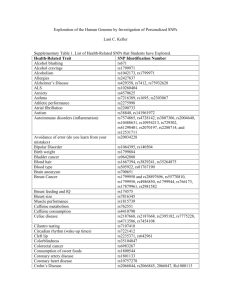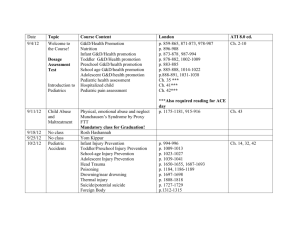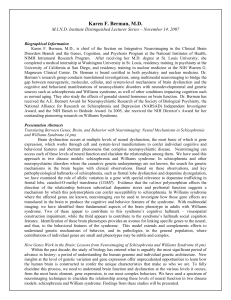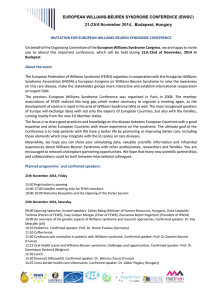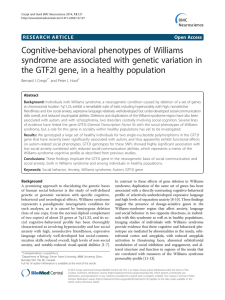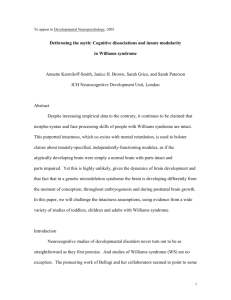Resources - Michigan State University
advertisement
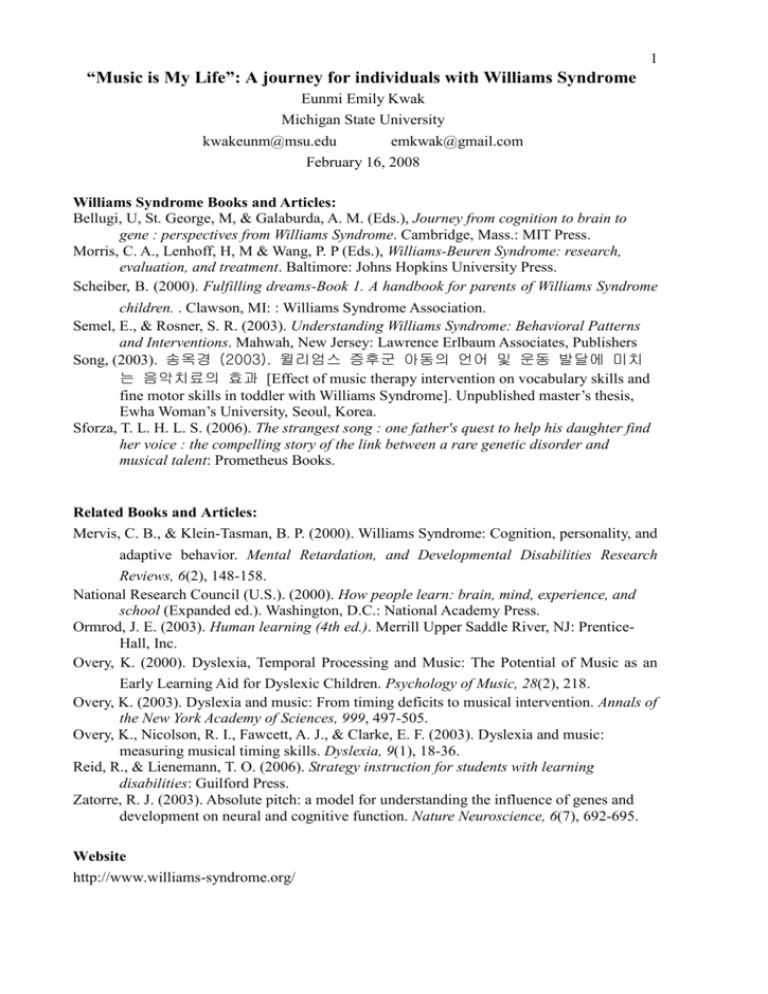
1 “Music is My Life”: A journey for individuals with Williams Syndrome Eunmi Emily Kwak Michigan State University kwakeunm@msu.edu emkwak@gmail.com February 16, 2008 Williams Syndrome Books and Articles: Bellugi, U, St. George, M, & Galaburda, A. M. (Eds.), Journey from cognition to brain to gene : perspectives from Williams Syndrome. Cambridge, Mass.: MIT Press. Morris, C. A., Lenhoff, H, M & Wang, P. P (Eds.), Williams-Beuren Syndrome: research, evaluation, and treatment. Baltimore: Johns Hopkins University Press. Scheiber, B. (2000). Fulfilling dreams-Book 1. A handbook for parents of Williams Syndrome children. . Clawson, MI: : Williams Syndrome Association. Semel, E., & Rosner, S. R. (2003). Understanding Williams Syndrome: Behavioral Patterns and Interventions. Mahwah, New Jersey: Lawrence Erlbaum Associates, Publishers Song, (2003). 송옥경 (2003). 윌리엄스 증후군 아동의 언어 및 운동 발달에 미치 는 음악치료의 효과 [Effect of music therapy intervention on vocabulary skills and fine motor skills in toddler with Williams Syndrome]. Unpublished master’s thesis, Ewha Woman’s University, Seoul, Korea. Sforza, T. L. H. L. S. (2006). The strangest song : one father's quest to help his daughter find her voice : the compelling story of the link between a rare genetic disorder and musical talent: Prometheus Books. Related Books and Articles: Mervis, C. B., & Klein-Tasman, B. P. (2000). Williams Syndrome: Cognition, personality, and adaptive behavior. Mental Retardation, and Developmental Disabilities Research Reviews, 6(2), 148-158. National Research Council (U.S.). (2000). How people learn: brain, mind, experience, and school (Expanded ed.). Washington, D.C.: National Academy Press. Ormrod, J. E. (2003). Human learning (4th ed.). Merrill Upper Saddle River, NJ: PrenticeHall, Inc. Overy, K. (2000). Dyslexia, Temporal Processing and Music: The Potential of Music as an Early Learning Aid for Dyslexic Children. Psychology of Music, 28(2), 218. Overy, K. (2003). Dyslexia and music: From timing deficits to musical intervention. Annals of the New York Academy of Sciences, 999, 497-505. Overy, K., Nicolson, R. I., Fawcett, A. J., & Clarke, E. F. (2003). Dyslexia and music: measuring musical timing skills. Dyslexia, 9(1), 18-36. Reid, R., & Lienemann, T. O. (2006). Strategy instruction for students with learning disabilities: Guilford Press. Zatorre, R. J. (2003). Absolute pitch: a model for understanding the influence of genes and development on neural and cognitive function. Nature Neuroscience, 6(7), 692-695. Website http://www.williams-syndrome.org/
